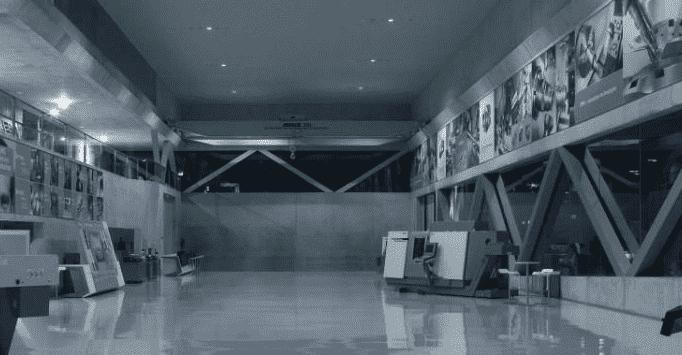Types of emergency lighting and what the requirements are
Emergency or evacuation lighting must be present in most buildings. But the requirements for it are set out in several regulations, it complicates the implementation of the system and the choice of the correct technical solutions. Equipment of this type has its own characteristics, which should be taken into account when creating a project and the installation of fixtures.
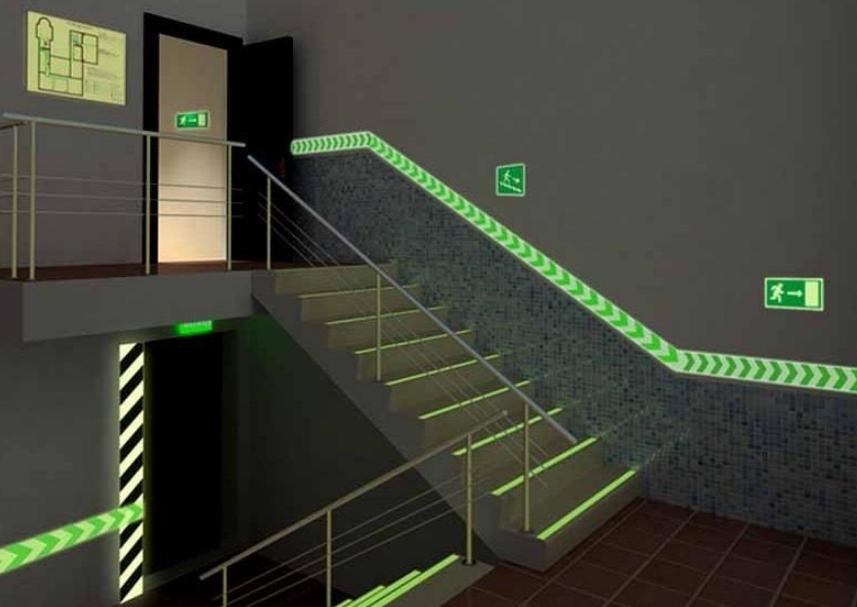
Classification
Fixtures relating to emergency lighting are always connected to a separate line, which has nothing to do with the normal lighting network. If the operation of standard lighting equipment is disrupted by a short circuit or fire, emergency lighting fixtures will help evacuate people from the premises or continue to do work for a while.
All regulations and requirements regarding emergency lighting are specified in several regulations. First of all this is SP 52.13330.2016, which replaced the previously valid 52.13330.2011. Moreover, the previous normative act is only partially invalid. To understand which clauses are still in force, it is necessary to be guided by the Decree of the Government of the Russian Federation №1521, issued on 26.12.2014.
Also in planning and installation take into account GOST R 55842-2013 and SP 439.1325800.2018. These acts contain almost all the information on the subject. But in some cases, it is necessary to take into account the industry acts, if they set out additional requirements.
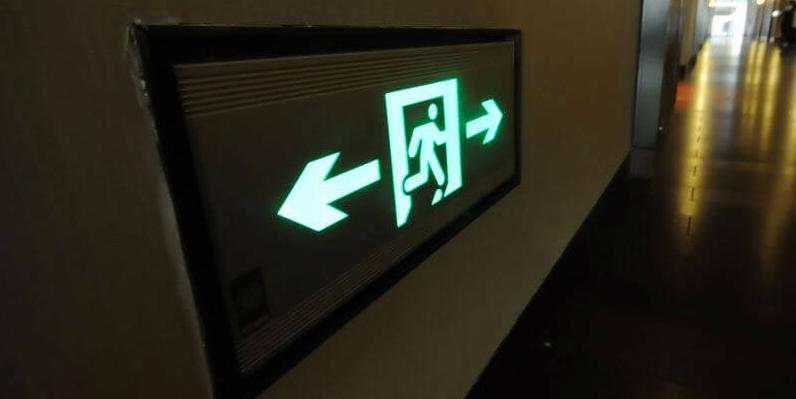
Emergency lighting is divided into two main types - evacuation and backup. The first type is divided into subspecies, so it is important to understand the features of each.
Emergency lighting
Emergency escape lighting is needed in all buildings, where in an emergency situation it is necessary to tell a person the shortest and safest way to the exit. Usually illuminated passageways, corridors, stairwells and flights of stairs, so that if the main light fails, a certain number of emergency lights remain.
The equipment must operate from a line not related to the general lighting or powered by a self-contained battery, which is placed in the body of the lamp. According to the standards, the light on the escape routes must operate for at least one hourand in some cases the time can be increased.
To determine the required power of lamps is used indicator of horizontal illumination, in corridors with a width of up to 2 meters on the floor in the middle it must be at least 1 lux. In wide corridors, the central part of about half of the total width should be illuminated with an indicator of not less than 0.5 lux. And the index of irregularity of light should not be less than 1/40.
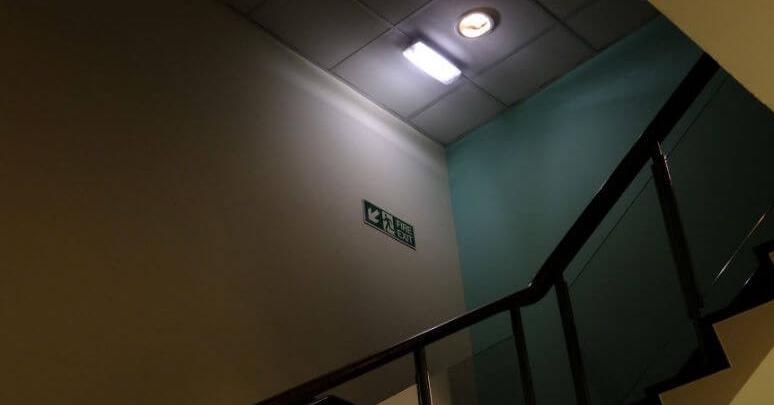
Evacuation lighting is most often designed during the construction phase. Therefore, the location of evacuation plans, the location of fire shields, and the location of emergency communication equipment should be provided in advance. It is best to agree on these points with the parties involved to determine the appropriate location for each facility.
Fixtures should be placed in specific areas specified in the SNiP:
- Places where there is a floor drop or where coatings of different types meet, which can create an evacuation hazard.
- Anywhere where the direction of travel changes.
- In corridors, passageways, and galleries along the way.
- In front of each of the evacuation exits.
- At the intersections of corridors and passageways.
- On all flights of stairs. It is important here that all steps have direct light to ensure good visibility.
- Near medical stations or first aid kits, if available.
- Wherever emergency communications or emergency or emergency notification equipment is installed.
- Where fire extinguishers and fire panels are located.
- Near evacuation plans.
In some cases, points may be added if there are specific features.
High-hazard area lighting.
This type has special features, its main purpose is to complete processes that pose a danger to humans. This can be both stopping equipment or machines, or shutting down systems that pose a risk of accidents, explosions, etc. in the absence of electricity.
Lighting is also switched on in emergency situations and must remain on for as long as it takes to complete all hazardous processes and stop equipment. Moreover, it must turn on quickly - the allowable pause between turning off the main light and turning on the emergency light is only half a second.
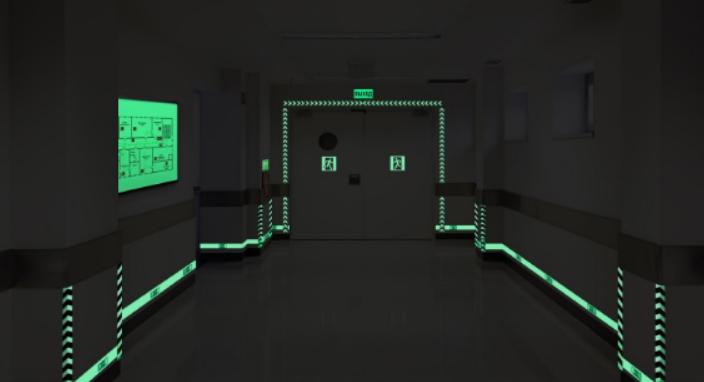
Fixtures are chosen so that the illumination in the rooms or workshops was at least 10% of the norm, but not less than 15 lux per square meter. At the same time lighting variations should not be more than 1/10.
Large area illumination
This option is also called antipanic lighting, because it guarantees order when evacuating a large number of people. The main purpose is to ensure normal visibility, which should not fall below 0.5 lux.
This type is mandatory for rooms over 60 square meters, even if there is good natural light. If the room has no windows, it is advisable to put at least one emergency light, even if the area is small.
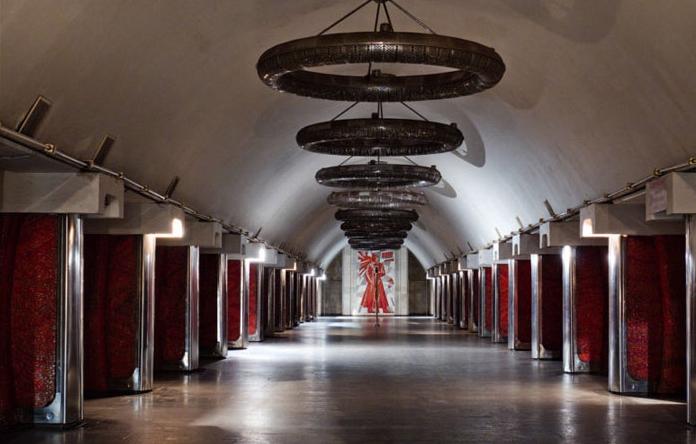
Backup lighting
Emergency backup lighting is not part of the evacuation lighting. Its main purpose - to ensure continuous operation of equipment to maintain the technological process where it is necessary. This option is also used by organizations engaged in water supply, heating, maintenance of sewage and other similar processes.
Standby lighting is necessarily put on the production, which require constant monitoring to prevent explosions, leaks of harmful substances, fires, etc. This system should not overlap with emergency lighting and used for evacuation. Lay separate circuits that work independently of each other.
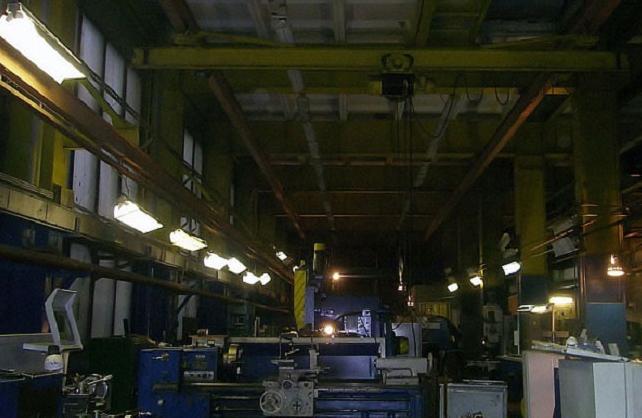
Lighting standards in this case are much higher. They should be at least 30% of the values established for the room in the standard lighting. Working hours are determined individually depending on the specifics.
Where to use emergency lighting
A complete list is in the regulations, so before you make a lighting system, you need to study them. Several points can be highlighted:
- Lighting can be done both in buildings where people work, and outside of them, if the lighting conditions are disturbed there.
- Illuminate all places where there is a danger in the passage of people.
- All passageways and stairways must be equipped with lamps if the number of evacuees exceeds 50 people.
- The main passageways and paths of employees in production facilities and workshops with more than 50 employees require installation of lamps.
- Stairwells and stairwells in buildings over 6 stories high are another mandatory place to install an emergency light.
- Production rooms where there is a danger to life when evacuating due to operating equipment or machinery.
- All rooms in which there is no natural light, because in case of power failure the visibility will be zero.
- If more than 100 people can be present in a public building or auxiliary room of an industrial enterprise at the same time, emergency lighting must be installed.
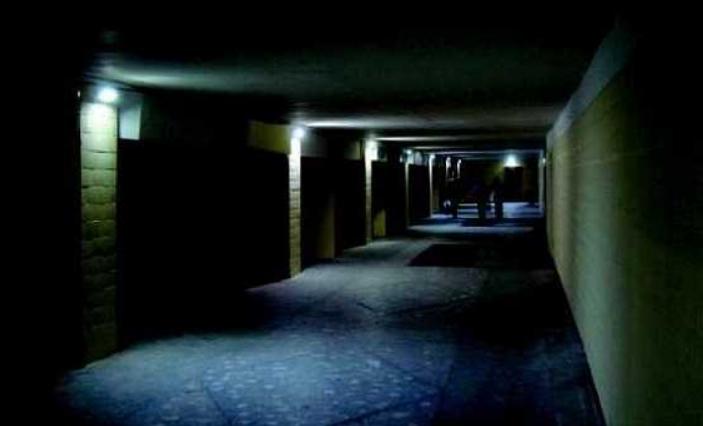
Emergency lighting Can be switched on during a power failure or permanently, there are no restrictions.
Selection of light sources for emergency lighting
According to SP 52.13330.2016 certain light sources can be used for emergency lighting. When choosing, proceed from the features of the building, the type of power supply and other aspects. The main options are:
- LED lights. The best solution today, providing good quality light without flicker. Also this option is characterized by low power consumption, which is especially important when using battery power, you can put a battery with a smaller capacity and thus reduce the cost.
- LED strips - another option that has the same characteristics as the lights, but it takes up less space. With tape you can make a continuous illumination along the length of the corridor, which will further increase the safety of evacuation.
- Fluorescent can be used if the temperature in the room does not fall below 5 degrees. This variant only works well in warm environments, so it should not be placed in unheated industrial premises and in cold corridors.
- Gas discharge lamps are also allowed to be installed. But only on the condition that they turn off quickly and have no problem lighting up again after a short time off.
- Incandescent are not recommended for emergency lighting. But if there is no other option, you can use them as well.
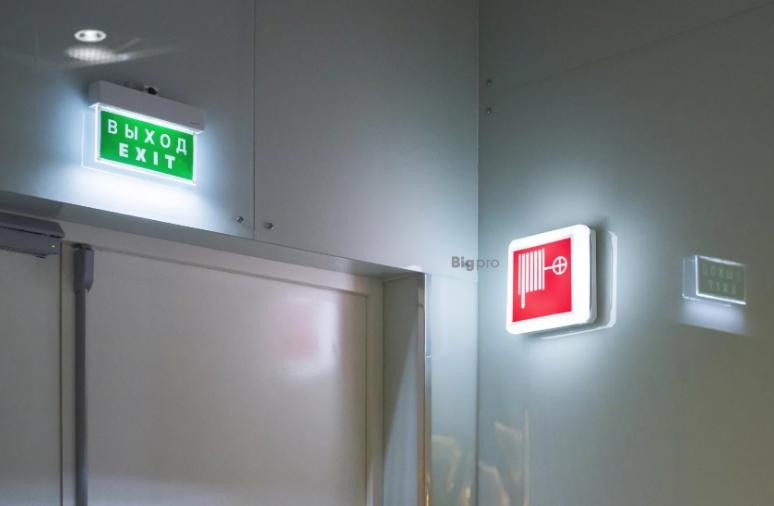
The standard illumination for all types of lamps is 15 lux, with the exception of incandescent lamps, their index is 10 lux.
Luminaires have requirements that are binding. So it is necessary to understand them, so as not to make mistakes in the design and installation of the system:
- All units of the system, which include in addition to the lamp unit, the control unit and the battery must be located in the enclosure or at a distance of not more than half a meter from it.
- Also, the emergency lights shall have an indicator to indicate in which mode the equipment is operating.
- The lamp must provide a color rendering index of at least 40 Ra.
- Know the difference between escape and emergency lights. The first type indicates directions and exits, most often with pictograms or arrows stuck on the surface. The emergency ones are used everywhere and provide normal visibility so a person can see where they are going.
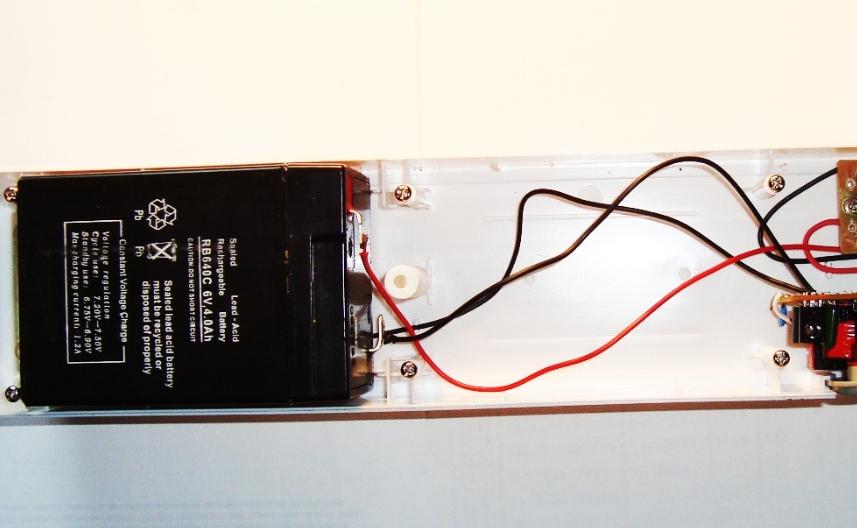
Emergency lighting lines, if powered by a separate circuit, should not run next to the main wiring to prevent damage to both circuits at the same time.
Requirements for emergency lighting by SP 52.13330 and PUE
To better understand the topic, you should study the main features of emergency systems from the regulations and PUE. Here are the most important points that should not be overlooked:
- The emergency light is turned on when there is an interruption in the main lighting. It must always be connected to another power source.
- Backup lighting is not used for evacuation. In individual cases it is possible to combine these variants, but in this case it is necessary to observe all requirements for both variants.
- Indicators and lamps in the standard situation should be powered from a separate line. And if it is damaged, the third option - a battery with a minimum life of 60 minutes - starts working.
- If there are usually no people in the building or its total area is less than 250 meters, individual flashlights can be used instead of stationary emergency lighting. They should be in each room or each employee.
- Most often, the lights are attached to or embedded in the wall. In some cases, they are placed on the ceiling.
Emergency lighting arrangements
Any violations in the organization of emergency lighting can lead to fines or even a ban on work until the remarks are corrected. To avoid such problems, you need to remember the recommendations:
- The easiest thing to do is to ask for advice from the supervisory authority. To do this, you need to have the design of the building in hand, as well as know the basic aspects of the work - the number of employees, their distribution in the rooms, etc.
- Emergency lighting project is done along with the rest of the work at this stage. It is important to specify the exact location of fixtures, their characteristics and the light source used.
- Power supply for emergency lighting is laid separately. In the case of stand-alone operation, models with a battery or a generator installed in a specially equipped place can be used.
- Observe lighting standards when selecting the characteristics of the luminaires. In long corridors, place the equipment at a distance of no more than 25 meters from each other.
- Particularly highlight hazardous areas - floor level differences, narrow passageways, staircases and platforms, etc.
- Batteries need to be checked periodically and recharged if necessary, they inevitably run down over time.
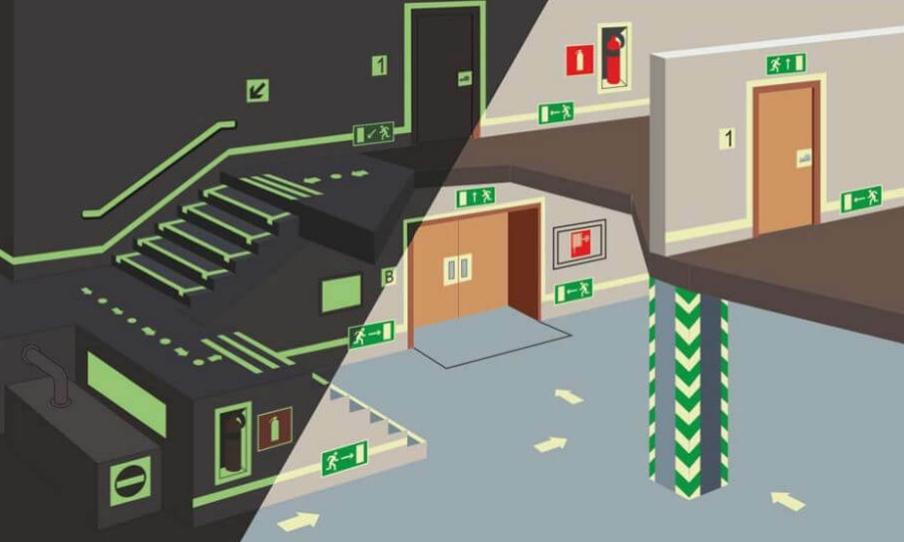
Making emergency lighting is not difficult if you know all the requirements, design and lay the system according to them. You can use this option as an addition to the main light, it is not prohibited.
Video in format: Answers to the most popular questions.
